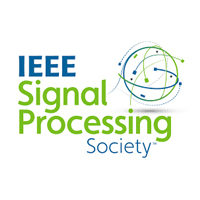Special sessions
Brain signal processing: Extracting meaningful features from functional magnetic resonance imaging
Organizers:
Isik Karahanoglu, Pfizer Inc
Maria Giulia Preti, CIBM Center for Biomedical Imaging, University of Geneva, EPFL
Summary
Functional magnetic resonance imaging (fMRI) enabled the monitoring of brain function at the macroscopic level. The main principle to detect brain activity is determined through the hemodynamic changes due to neural activation. Although this measured fMRI signal is a by- product of the underlying neural activity and changes in the blood flow, the use of advanced signal processing techniques allows to extract meaningful information that can be linked to several neurological and psychiatric diseases.
This special session involves state-of-the-art research in understanding the underpinnings of the fMRI signal, its reliability, and its relation to the underlying brain structural architecture.
We specifically aim to elaborate on the following:
1) how brain activity is dynamically organized into functional networks,
2) how we can embed structural and functional information to decipher brain activity (e.g., by using computational models and graph signal processing),
3) how neural and physiological changes contribute to the measured brain activity by fMRI, and
4) how we can improve the validity and reliability of fMRI findings.
Speakers:
Danielle S. Bassett, University of Pennsylvania, USA
Jingyuan E. Chen, Harvard Medical School, USA
Stephanie Noble, Yale University, USA
Maria Giulia Preti, University of Geneva, Switzerland
Joana Cabral, University of Minho, Portugal
Super-resolution microscopy: Bioimaging at the nanoscale
Organizers:
Romain F. Laine, MRC-LMCB, UK
Sponsored by:

Summary
Super-resolution microscopy (SRM) is becoming an indispensable tool for biomedical research. SRM encompasses a group of fluorescence microscopy techniques that allow the observation of cellular and molecular life at the nanoscale and, as such, can shed light on molecular interaction molecular disease phenotype and behaviours that were unobservable with any previous imaging technologies. A number of these techniques are slowly entering our research imaging facilities but SRM remains an active and fruitful field of research through the development of faster, more accurate, more quantitative, more compatible with tissue imaging, live-cell imaging. With this special session, we aim to open SRM to the larger biomedical audience, highlighting the current capabilities, limitations and future potentials, in particular in the light of understanding diseases at the molecular level.
Speakers:
Marcelo Nollmann, INSERM/CNRS, France
Izzy Jayasinghe, University of Leeds, UK
Christian Sieben, Helmholtz Centre for Infection Research, Germany
Francesca Bottanelli, Freie Universität Berlin, Germany
Ulrike Endesfelder, Max Planck Institute for Terrestrial Microbiology, Germany
Organizers:
Caroline Magnain, Harvard Medical School, USA
Summary
This special session will highlight novel high-resolution optical imaging and clearing techniques used to study the microstructure of the post-mortem human brain. These techniques allow the visualization of the 3D cellular and fiber architecture, as well as the vasculature at the micron level. They also scale well from several cubic centimeters to whole coronal sections. The gold standard for neuroimaging is MRI and its various modalities (diffusion and functional), as well as histology. However, the former is restricted in terms of resolution, even ex-vivo, and the latter is a 2D technique, suffering from distortions and limited volumetric quantitative outcomes. The optical techniques presented here are invaluable tools to bridge the gap between the macroscale of MRI and the microscale of histology, which would facilitate in vivo inference and greatly expand the utility of a cellular census and our understanding of connectivity.
Speakers:
Caroline Magnain, Harvard Medical School, USA
Hui Wang, Harvard Medical School, USA
Markus Axer, Forschungszentrum Jülich, Germany
Irene Costantini, University of Florence, Italy
Ludivico Silvestri, University of Florence, Italy
Security and Fairness in Collaborative Healthcare Data Analysis
Organizers:
Marco Lorenzi, INRIA, France
Summary
This special session aims at providing a thorough presentation of the research landscape around the topic of Security and Fairness in Collaborative Healthcare Data Analysis, with an illustration of cutting-edge research tackling translational and methodological challenges.
Real-world applications of biomedical data analysis must often adhere to strict constraints concerning the non-transferability of sensitive information across centres. These limitations impose important methodological challenges for the application of current powerful learning methods to healthcare data. Furthermore, when machine learning is based on agglomerated data, the problem of bias and fairness becomes critical in decision making processes. In particular, model’s prediction and parameters may importantly differ when trained on multiple data instances characterized by different conditions, which can either be known, such as demographics or genetic factors, or unknown. For all these reasons, the problem of security and fairness in machine learning is nowadays a central issue when deploying modern and large-scale learning and inference systems to real life scenarios.
Important research efforts are currently spent to define secure, robust and fair theoretical approaches and computational frameworks to healthcare data analysis. Federated learning offers the opportunity of securely training models on private information distributed across data centres, without the need to centrally store the data. Privacy in machine learning can be achieved through the obfuscation of data, models parameters, and/or queries. Privacy protection is usually achieved through the use of homomorphic encryption or secure two- party computation. Bias correction methods allow to disentangle population-specific effects from the variability due to different data-instances and noise.
These modeling paradigms are at the core of current initiatives aiming at the analysis of multicentric medical information, and several issues are currently focus of active research in the field, for example related to the problems of scalability, information leakage and robustness to malicious attacks, flexibility to account for complex modelling schemes and optimization methods, and general trade-off between security and performance.
Speakers:
Andre Altmann, University College London, UK
Marco Lorenzi, INRIA, France
Andre Marquand, Donders Institute for Brain, Cognition and Behaviour, The Netherlands
Melek Önen, EURECOM, France
Holistic approach to correlative microscopies: From sample preparation to data integration
Organizers:
Nataša Sladoje, Uppsala University, Sweden
Raphaël Marée, University of Liège, Belgium
Summary
Correlative multimodal imaging (CMI) combines two or more imaging modalities to gather heterogeneous information about the same specimen. This is not a single technique or method, but rather a general term for a multiplicity of workflows aiming to create a composite view of the sample, with multidimensional information about its macro-, meso- and microscopic structure, dynamics, function, and chemical composition. Since no single imaging technique can reveal all these details, CMI is the only approach to understand biomedical processes and diseases mechanistically and holistically. CMI relies on the joint multidisciplinary expertise from biologists, physicists, chemists, clinicians, and computer scientists, and requires coordinated activities and knowledge transfer between academia and industry, as well as instrument developers and users.
The proposed session aims at presenting the ISBI audience the different steps and challenges of CMI, in particular emphasizing the computer vision point of view and its role in the process. The session will focus on the interconnection between the different integral steps of a correlative workflow, enhancing potential for collaboration and synergies between life scientists, microscopists, and computer scientists. We will promote a holistic approach to address challenges in all the steps in the process, in selected real examples: constraints of sample preparation, limitations and opportunities of imaging techniques, methods for data alignment (registration) enabling harvesting the spatially corresponding information from different modalities, and finally data integration and visualisation techniques.
Speakers:
Kedar Narayan, National Institutes of Health, USA
Matthia Karreman, Germany and German Cancer Research Center, Germany
Kevin Eliceiri, University of Wisconsin-Madison, USA
Perrine Paul-Gilloteaux, CNRS, France
Christian Tisher, EMBL, Germany











